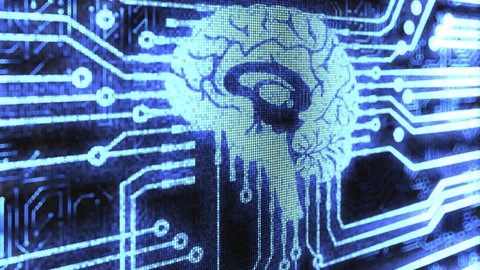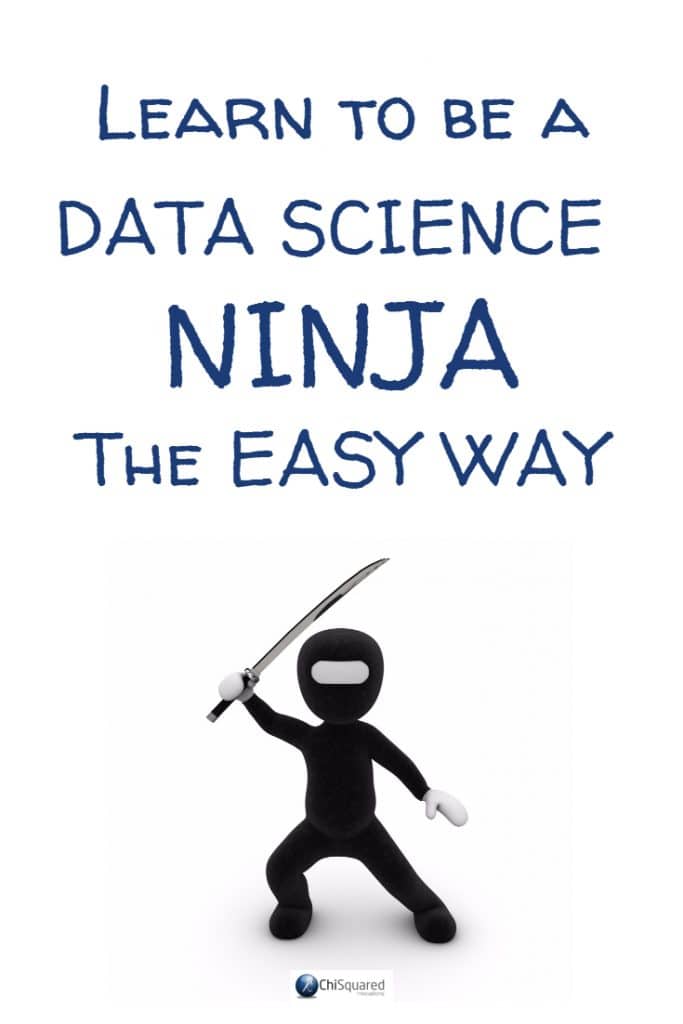If you're just getting started in Data Science and you're looking for a little guidance on how to go about it, we've put together a list of the top Data Science courses.
There are loads of great courses to get started in Data Science, but where should you start and which ones should you take first?
The post will help you make those decisions, and you can think of it as a Data Science starter kit.
To start with, I'm going to lay out the 6 steps to learn Data Science.
You won't want or need to follow all those steps right from the beginning, there are too many of them, so I'll give you the 3 steps to learn Data Science when you're just getting started in Data Science.
Then I'll give you my best 3 pick of the top Data Science courses to follow that roadmap.
By the time you've got a working knowledge of each of these areas your Data Science skills will be the envy of your colleagues!
More...
Disclosure: we may earn an affiliate commission for purchases you make when using the links to products on this page. As an Amazon Affiliate we earn from qualifying purchases.
Getting Started in Data Science
Want to be an expert statistician? Great - enjoy the next 10 years of hard work!
What about machine learning? Do you want to be an expert in that? Or what about programming or data visualisation? That'll be 10 years (or more) for each.
Whether you're just getting started in Data Science or you're already on the path to becoming an expert you're going to need a strong grounding in all of these disciplines. It's safe to say that it's going to take you at least 20 years or more before you can consider yourself to be experienced, proficient and an authority in Data Science.
It can be daunting, especially if you're just getting started in Data Science.
You're going to have a lot of questions, including:
In this blog post we're going to introduce you to the 6 steps to learn Data Science - this is your Data Science starter kit.
This post is the 1st in a series of 7 in which we bring you 18 of the most inspiring courses to help you get started in Data Science - our pick of the top Data Science courses for each of the 6 steps to learn Data Science.
These books are categorised by general Data Science, statistics, Python, R, Machine Learning and data visualisation so that you can choose the top Data Science courses from each category and you don't miss a thing!

Pin it for later
Need to save this for later?
Pin it to your favourite board and you can get back to it when you're ready.
6 Steps to learn Data Science
Over the past few years I've been asked all of the questions above, and I've always tried to steer the questioner in the right direction.
This has led me to discover what I consider to be the top Data Science courses, so I've decided to pull them together into one place for you to check out.
There are 6 steps to learn Data Science:
- 1General Data Science
- 2Statistics
- 3Python
- 4R Programming
- 5Machine Learning
- 6Data Visualisation
In this series of posts I've made 3 picks of the top Data Science courses in each of these categories, and while you would benefit from taking all of them, one from each category would be great.
Having said that, getting through a list of 6 courses is a tall order in itself, so where should you begin when you're just getting started in Data Science?
How to be a Data Science Ninja in 3 Simple Steps @chi2innovations #datascience
3 Steps to Getting Started in Data Science
When it all comes down to it, you need lots of skills to a Data Scientist.
But which ones should you acquire first?
Above all, there are 3 skills that will set you up for a life as a Data Scientist. You need to able to:
- 1Analyse data to find patterns and trends that describe to us what the world was like when the data were collected
- 2Create models that can spot patterns and trends that can predict what the world will be like in the future
- 3Tell the story of the data using inspiring graphs and charts
So which branches of Data Science are these?
- 1Statistics
- 2Machine Learning
- 3Data Visualisation
These are where you should get started in Data Science.
Did you know that you can get Data Science audiobooks for FREE with an Audible Trial?
Top Data Science Courses for Beginners
So now that we've whittled down our Data Science starter kit to the first 3 areas, let's have a look at my pick of the top Data Science courses in each of these 3 categories.
Top Data Science Courses: Statistics
My top recommendation to get started in Data Science is one of the highest rated statistics courses at Udemy - Master Statistics & Machine Learning - by Mike X Cohen.
It is my top recommendation because not only do you get a great grounding in statistics, but you also learn how to code in Python and you get a head start in data visualisation and Machine Learning too. It's sort of a 4-in-1 gift!
A rigorous and engaging deep-dive into statistics and machine-learning, with hands-on applications in Python and MATLAB.
If you want to make yourself a future-proof employee, employer, data scientist, or researcher in any technical field - ranging from data scientist to engineering to research scientist to deep learning modeler - you'll need to know statistics and machine-learning.
And you'll need to know how to implement concepts like probability theory and confidence intervals, k-means clustering and PCA, Spearman correlation and logistic regression, in computer languages like Python or MATLAB...
Statistics and probability control your life. I don't just mean What YouTube's algorithm recommends you to watch next, and I don't just mean the chance of meeting your future significant other in class or at a bar. Human behavior, single-cell organisms, Earthquakes, the stock market, whether it will snow in the first week of December, and countless other phenomena are probabilistic and statistical. Even the very nature of the most fundamental deep structure of the universe is governed by probability and statistics.
You need to understand statistics.
Nearly all areas of human civilization are incorporating code and numerical computations. This means that many jobs and areas of study are based on applications of statistical and machine-learning techniques in programming languages like Python and MATLAB. This is often called 'data science' and is an increasingly important topic. Statistics and machine learning are also fundamental to artificial intelligence (AI) and business intelligence.
If you want to make yourself a future-proof employee, employer, data scientist, or researcher in any technical field - ranging from data scientist to engineering to research scientist to deep learning modeler - you'll need to know statistics and machine-learning. And you'll need to know how to implement concepts like probability theory and confidence intervals, k-means clustering and PCA, Spearman correlation and logistic regression, in computer languages like Python or MATLAB.
There are six reasons why you should take this course:
Top Data Science Courses: Machine Learning
My next recommendation is a highly respected course by a highly respected teacher - Data Science: Supervised Machine Learning in Python - by The Lazy Programmer.
This course includes includes Scikit-Learn algorithms in Python, and you'll go on a tour of many different types of supervised algorithms for Machine Learning, all while staying inside the Python ecosystem.
By the time you've done the first 2 courses on this list you will have learnt how to program in Python, be great at statistics and have the beginning of a really solid platform for Machine Learning.
Full Guide to Implementing Classic Machine Learning Algorithms in Python and with Sci-Kit Learn
In this course, we are first going to discuss the K-Nearest Neighbor algorithm. Next we’ll look at the Naive Bayes Classifier and the General Bayes Classifier.
Next we’ll look at the famous Decision Tree algorithm. The last algorithm we’ll look at is the Perceptron algorithm. Perceptrons are the ancestor of neural networks and deep learning, so they are important to study in the context of machine learning.
In this course, we are first going to discuss the K-Nearest Neighbor algorithm. It’s extremely simple and intuitive, and it’s a great first classification algorithm to learn. After we discuss the concepts and implement it in code, we’ll look at some ways in which KNN can fail.
It’s important to know both the advantages and disadvantages of each algorithm we look at.
Next we’ll look at the Naive Bayes Classifier and the General Bayes Classifier. This is a very interesting algorithm to look at because it is grounded in probability.
We’ll see how we can transform the Bayes Classifier into a linear and quadratic classifier to speed up our calculations.
Next we’ll look at the famous Decision Tree algorithm. This is the most complex of the algorithms we’ll study, and most courses you’ll look at won’t implement them. We will, since I believe implementation is good practice.
The last algorithm we’ll look at is the Perceptron algorithm. Perceptrons are the ancestor of neural networks and deep learning, so they are important to study in the context of machine learning.
One we’ve studied these algorithms, we’ll move to more practical machine learning topics. Hyperparameters, cross-validation, feature extraction, feature selection, and multiclass classification.
We’ll do a comparison with deep learning so you understand the pros and cons of each approach.
We’ll discuss the Sci-Kit Learn library, because even though implementing your own algorithms is fun and educational, you should use optimized and well-tested code in your actual work.
We’ll cap things off with a very practical, real-world example by writing a web service that runs a machine learning model and makes predictions. This is something that real companies do and make money from.
All the materials for this course are FREE. You can download and install Python, Numpy, and Scipy with simple commands on Windows, Linux, or Mac.
This course focuses on "how to build and understand", not just "how to use". Anyone can learn to use an API in 15 minutes after reading some documentation. It's not about "remembering facts", it's about "seeing for yourself" via experimentation. It will teach you how to visualize what's happening in the model internally. If you want more than just a superficial look at machine learning models, this course is for you.
Top Data Science Courses: Data Visualisation
My final recommendation is Data Visualization in Python Masterclass: Beginners to Pro, by Laxmi Kant.
In this course you'll get a crash course in Python (which you shouldn't need by this stage), and crash courses in NumPy and Pandas too, which is very useful.
You'll learn to plot with Pandas, Matplotlib, Seaborn, Plotly and Cufflinks, and by the time you get to this stage you will be a very well-rounded Data Scientist indeed!
Visualisation in matplotlib, Seaborn, Plotly & Cufflinks, EDA on Boston Housing, Titanic, IPL, FIFA, Covid-19 Data.
This comprehensive course will be your guide to learning how to use the power of Python to analyze data, create beautiful visualizations!
We'll teach you how to program with Python, how to analyze and create amazing data visualizations with Python! You can use this course as your ready-to-go reference for your own project.
This comprehensive course will be your guide to learning how to use the power of Python to analyze data, create beautiful visualizations!
This is a very unique course where you will learn EDA on Kaggle's Boston Housing, Titanic and Latest Covid-19 Datasets, Text Dataset, IPL Cricket Matches of all seasons, and FIFA world cup matches with real and practical examples.
This course is designed for both beginners with some programming experience or experienced developers looking to make the jump to Data Science!
With over 200+ Full HD video lectures and detailed code notebooks for every lecture this is one of the most comprehensive courses on Complete Data Visualization in Python.
We'll teach you how to program with Python, how to analyze and create amazing data visualizations with Python! You can use this course as your ready-to-go reference for your own project.
Here just a few of the topics we will be learning:
Getting Started in Data Science - Summary
I hope our pick of the top Data Science courses for beginners will help you in your task of getting started in Data Science.
This is only the beginning, though.
I have chosen the top Data Science courses in each of the 6 steps to learn Data Science in your Data Science starter kit, and written a blog post about each of them
Ready to see the rest of them? Then choose your medicine from the navigation element below.
Let's go!
Jump Station
This blog post is part of a series of 7 posts on learning how to be a Data Science Ninja.
For more detail, choose from the other options below:




